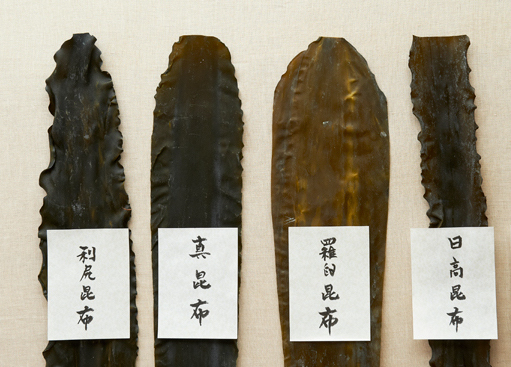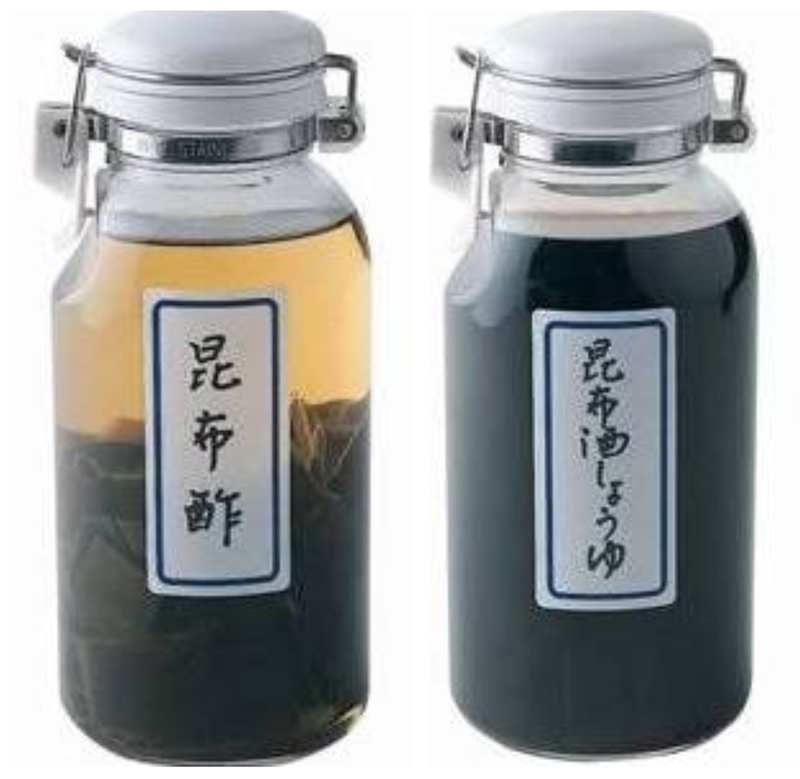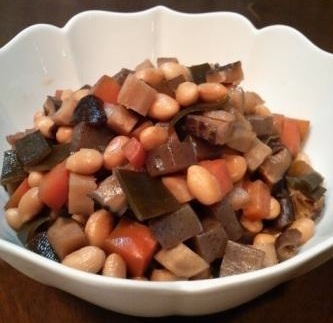
Four varieties of kombu (left to right): Rishiri, ma, Rausu, Hidaka. Find out about the differences among kombu varieties and how best to make stock from them.
昆布の力 Kombu Power
All varieties of kombu are rich in umami seibun, or glutamates; the essence of flavor enhancement. The higher the percentage of glutamates, the more heat-sensitive the kombu will be; cold water extractions will yield the best results with gentle heat being applied, if at all, after a minimum of 10 minutes (preferably 20 to 30 minutes) soaking at room temperature. Cold water extracts can be kept for 4 or 5 days in the refrigerator. Use a glass jar for best results. Early signs of spoilage are a sweet smell (sour comes later in the process of decay). A sediment at the bottom of the container probably means the piece of kombu you are using came from the root end of the sea vegetable. If your tap water has a metallic aftertaste, you will probably find that using bottled “spring” water will yield better results.
A simple, versatile stock can be made by setting kombu (kelp; marine plants in the Laminaria family of brown algae) in a jar of water. The result is a subtle, slightly briny broth the Japanese call kombu-jiru, literally “kombu liquid” that I have dubbed “Kelp-Alone Stock“). Although a staple of the Japanese kitchen, stock made from kombu works well with any cuisine.

Flavor-Enhanced Condiments
In addition to stocks, kombu works flavor-enhancing wonders on vinegar, oil and soy sauce, too. To make your own umami-boosted condiments, place a small piece of kombu in a glass bottle or jar (one with a tight-fitting lid). Make kelp-enhanced vinegar by covering the kombu with rice, wine, or fruit vinegar. Close, and set in a cool, dark, dry spot for several days (and up to a week) to develop deep, complex flavor. Make kelp-enhanced soy sauce in the same manner. Use either (or a bit of both) when making oil-and-vinegar salad dressings.

Gomoku Mamé Ni 五目豆煮
In addition to stocks, kombu works flavor-enhancing and fiber-softened wonders on dried bean cookery. The classic in the washoku kichen is a dish called gomoku mamé ni. Recipe in KANSHA pg 136; in WASHOKU pg 189.

Rausu kombu
swaying in ocean currents off the coast of Hokkaido.




